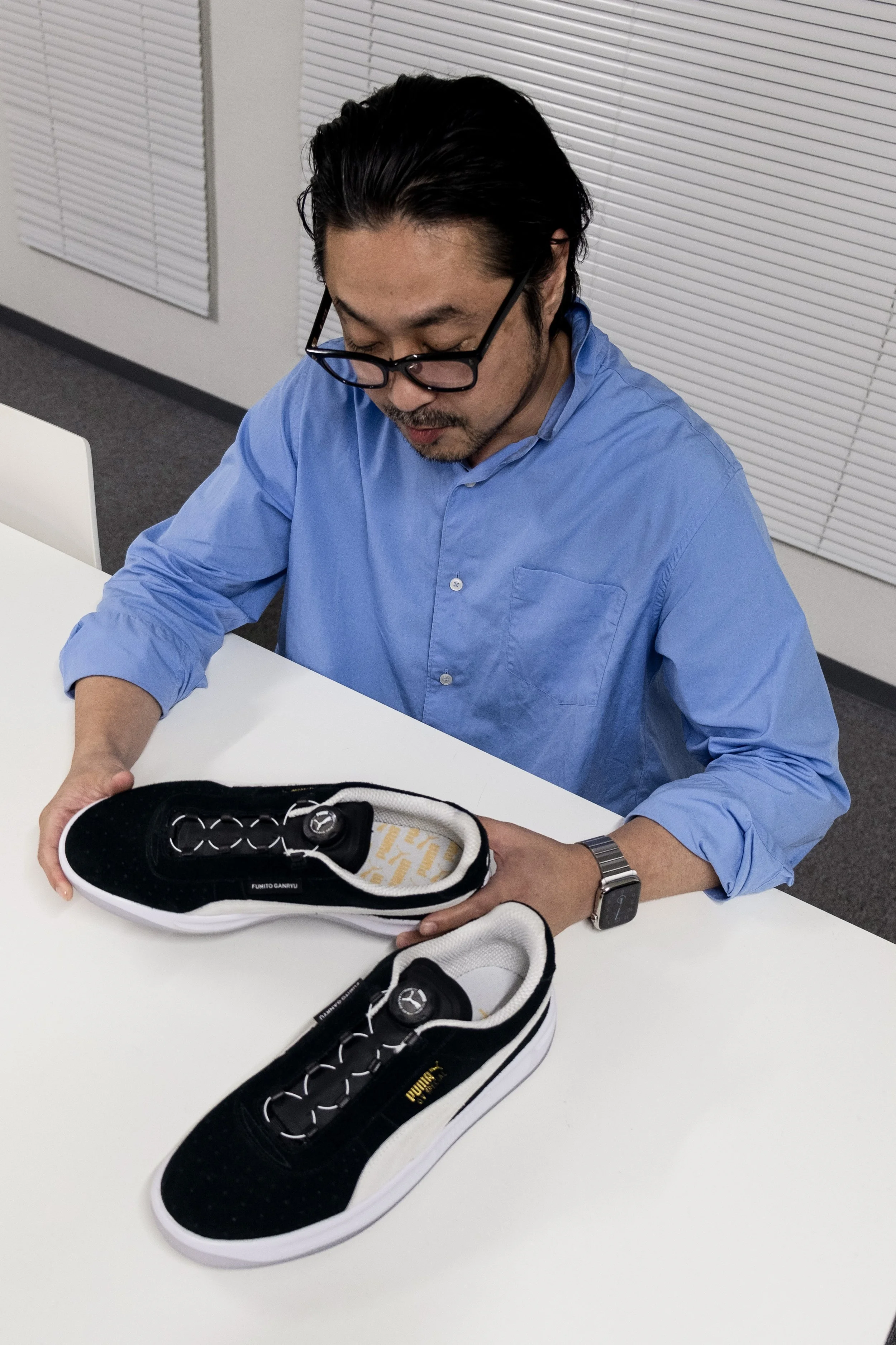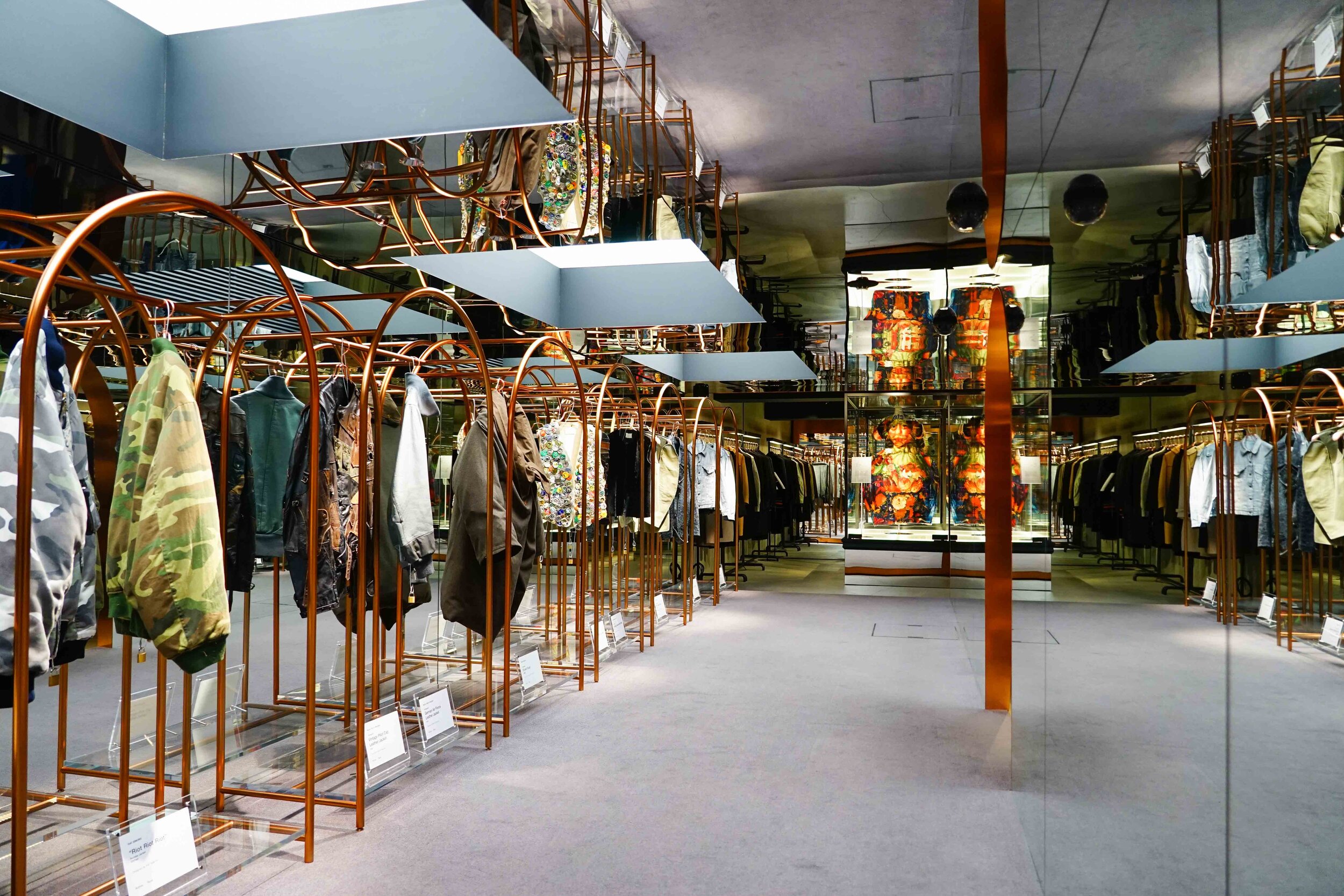FUMITO GANRYU - Protect the Past. Discover the Future

Japanese fashion is defined by balance. Whilst it is undeniably one of the forward-thinking landscapes in the industry, being host to brilliant minds that can't help but innovate, backed by this is a sense of tradition that is unwavering. An understanding of history within design and detail is carried on through generations by future creatives, and threaded into the future they lay before us is deeply rooted in knowledge and care. It is this balance of stepping forward whilst keeping an eye on the past that makes Japanese designers forever the ideals of fashion.
Amongst these paragons are the likes of Junya Watanabe and Rei Kawakubo, two names that echo in the halls of fame for reasons that anyone into fashion can understand. Being the two designers that truly encapsulate the above statement of the future meets the past, they have lit the way for other designers to learn from them and flourish in their respective ways. One of which has become a paragon in their own right, and they go by the name of Fumito Ganryu.
Fumito Ganryu, born in 1976 in Fukuoka, started his fashion career at none other than Bunka - a landmark for future fashion pioneers. Bunka, the College of Fashion in Tokyo, is the right of passage for the next generation of designers. Having graduated in 2000, Ganryu would go on to work as a pattern designer for Junya Watanabe for just 3 years before creating his own diffusion line for Rei Kawakubo’s Comme Des Garcons, titled ‘GANRYU’.
Ganryu would not stop there, and in 2018 would eventually launch his very own label, the eponymous brand FUMITO GANRYU - Taking elements from all that he had learned from Junya and CDG, his new label would hone in on his avant-garde flare. Balancing wearable everyday pieces with nuanced detailing and extraordinary proportions, Ganryu achieved something that many consider to be one of fashion's biggest trials - a genderless vision. Being a continuous beacon to strive for in his work, the notion of fluid gender across his pieces became a trademark style of his, and he continues to be praised for breaking down boundaries in this field.
FUMITO GANRYU is an effortless blend of history meets innovation; a constant pursuit of keeping tradition and breaking it. Whilst the pieces are inspired by iconic workwear, and often influenced by streetwear culture, there is an indefinable tone of rule-breaking within Ganryu’s work that is ever present and ever delectable. People find solace in his large proportions and eccentric silhouettes, whilst never fearing to look out of place. This is fashion for people that don’t want to say too much, but just enough to be heard.
As well as running his own label, it’s only right that a prestigious head like Ganryu would collaborate with some of the best too. Currently, there is no one quite doing projects like this than German footwear giant Puma. Being one of the leading footwear brands when it comes to innovation and unique collaborations, it brings us much joy to see Ganryu work on the recent PUMA X GANRYU GV SPECIAL, a shoe that takes the essence of what the japanese designer does, and interject it into the footwear industry. In a constant pursuit for footwear brands to try and balance comfort, style, and performance, we can’t think of a better ambassador to create a shoe that combines all of this.
It’s with great pleasure to be able to sit down with the man himself to celebrate the launch of his upcoming shoe, to dissect his knowledge, talk about his past, and discuss his future in the exclusive sabukaru interview.
You have worked under one of the most prolific brands in the world - having started as a pattern cutter for Junya Watanabe and spent over a decade working with Comme des Garçons. How in ways does your past knowledge help you today?
The attitude and sentiment toward making things.
Do you ever find that this vast prior knowledge is, in some ways, a hindrance? Or do you still find that even today you are learning new things; allowing yourself to be playful, make mistakes, and break traditions?
Quite frankly, I am still learning the craft, and I would like to continue putting in the work and gain more knowledge. However, I have to admit, there are certainly times when I feel as though the knowledge and experience I have gained over the years is getting in the way of ideation and creation. In these moments, I try to forget all the things I learned, and tackle it with a fresh mind. Ironically, this in itself is something I have learned or acquired through the accumulation of experience and knowledge I have gained over the years.
I’m sure a lot of our readers would love to hear about how your career all started. Can you tell us a little about how you broke into this industry?
In my early teens, I used to write manga with heavy subject matters [laughs]. I also took time to design the clothes and outfits the characters would wear, and I found this to be more fun than expected, so this would be the inception of my interest in fashion, I would say.
What does it take to maintain such a level in the industry? Some people only dream of working for the likes of CDG, let alone staying there for such a long time and then going on to build their own brand.
Passion is a prerequisite. Only then is it a careful balance of not entirely pandering nor imposing or suggesting an idea, all considered from a bird’s eye view on things.
Speaking of your own brand, for people who may have never heard of FUMITO GANRYU, can you please give a description in your own words?
FUMITO GANRYU and FUMITO GANRYU RED LABEL develop clothes simultaneously, where the main label seeks to unify design, function, and comfort, while the diffusion label aims to give tangible form to the inner thoughts and impulses. Although each of these collections is produced under an independent and complete theme each season, the connection between the two creates a comprehensive interpretation of our vision.
Debuting your brand in 2018, at Pitti, what’s changed now in comparison to when you first started?
What’s changed most is how we cleared up the mixed messaging and colliding worldviews. Our main label offers designs that I genuinely want to wear as clothes, while RED LABEL provides ideas that I genuinely want to be made into clothes as a designer.
We know there is a focus on blending traditional methods with forward-facing innovation with your brand. What are some of the hardships of trying to build the bridge between these two worlds?
We make it a point to tackle new ideas each time, however, this very idea and our approach to design has been with us since the beginning, so I think we rather do a good job taking these challenges head on with much enjoyment.
Your brand has been described as ‘challenging but wearable’ - something we agree with completely. How do you find this balance, of something that is a statement yet so effortlessly tasteful?
I don't want to be bound by the place I visit or the mood I am in, so for the main label, we try to create pieces that stand out but don't don’t feel out of place, that make a statement but still blend in, for all occasions, with extreme exceptions. I myself find it tedious to choose or change clothes according to different occasions, you know [laughs].
You’ve been heard to describe fashion the same as one of the true independent art forms - similar to sculpture, architecture, painting and literature. Can you please dissect this for us?
I believe that what constitutes art and fashion is up to each individual’s interpretation. That being said, personally, I don’t use the word “fashion” to refer to mere clothing. I define fashion as something that makes you feel good, motivates you, or has an effect on you as a person. Also, since I create my work on the premise that it is to be physically worn, if I have an idea that I feel is more appropriate than as a fashion statement, I would like to express it in another medium rather than forcing it into a fashion statement.
And if you approach fashion as more of an art form rather than purely aesthetical, would it be right to say how you see yourself more as an artist rather than a fashion designer?
As for the work we are currently doing for FUMITO GANRYU, we see it as an extension of fashion design.
To reconstruct and recontextualize everyday clothing has become a trademark style of yours. Where does the fascination come from with this idea?
For the main label, it is designed with the premise of everyday wear that enhances one's feelings when worn, with things like convenience and comfort equally in mind. By starting from a logical point of view and putting things together sensibly, and by repeatedly adding and subtracting, multiplying and dividing a wide variety of elements, the end result is a neutral value, ∴ (therefore) neutral object, which is created with the goal of bringing out the wearer's own view of the world.
Gender becomes a common theme within your collections, or more accurately the lack of gender. Although labeled as menswear, the clothing is incredibly fluid - why is it so important for you to voice self-expression through clothing?
Fashion that is truly tailored for you is not only aesthetically pleasing, but it also has an effect internally, supporting your mood, lifting your spirit, etc. It can be a catalyst to start something, inspire you with an attitude to aim higher goals in life, or even a driving force to take action, and is simply something irreplaceable in life.
For someone who has been designing for so long, continuing to innovate, what keeps you going? What inspired you to still create?
I think it comes down to the fact that there’s not an end to this. As for inspiration, it is a thought or idea that arises from everyday experiences, based on the events that happen in the world or even a perceived mood. From there the imagination begins.
As someone with such wisdom when it comes to forward-thinking fashion, in your words, what does the future of fashion look like?
I believe that we need to accumulate more knowledge and improve our ability to ideate. As for the future of fashion, I believe that it will be created jointly by the creators, the media, sales people, as well as the wearers, who are the main focus, of course. I hope to be one of the leaders in creating this new , where new synergies can be created through unprecedented approaches.
Photo by Shirin Pasqual
Written by Joe Goodwin


















